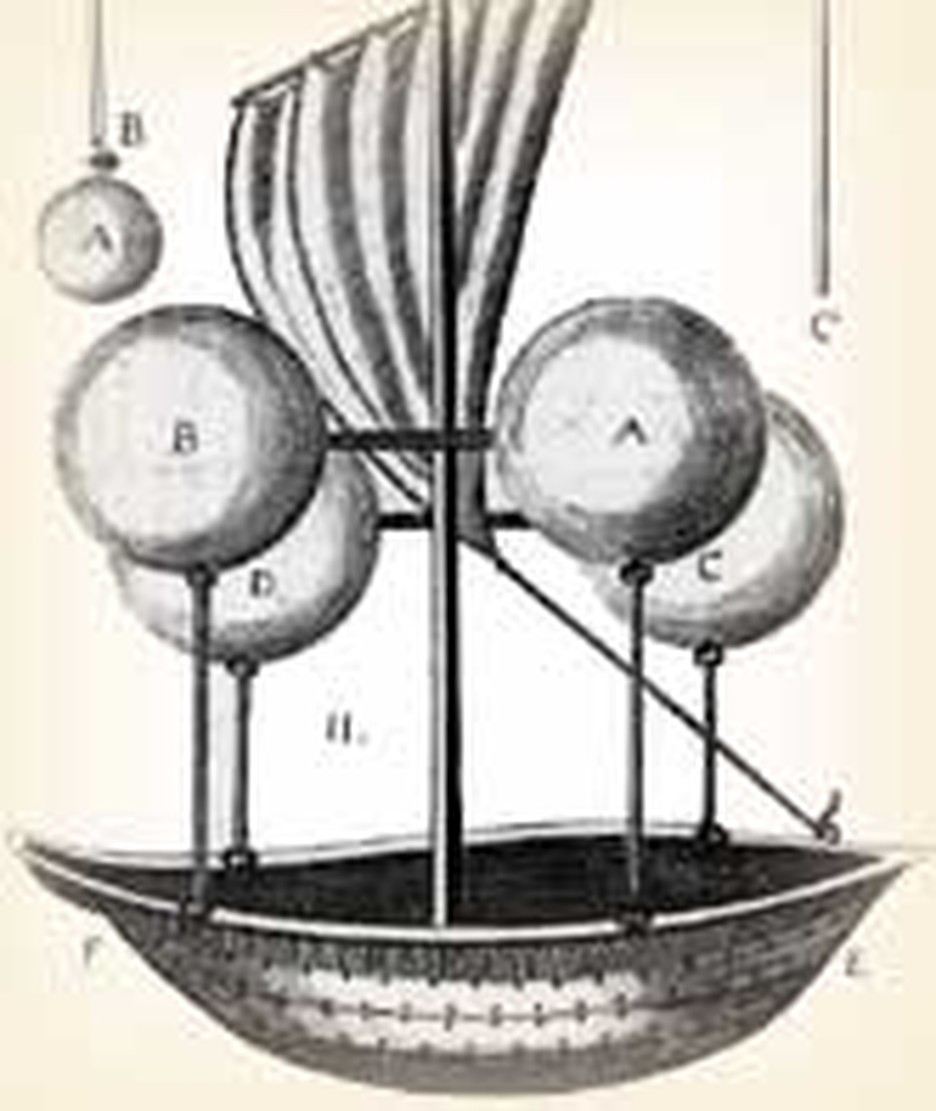
On November 11, 1647 a sixteen year old Italian boy became a novice in the Society of Jesus in Rome. That in itself was not extraordinary. It was the mind of the young man that was extraordinary. He was one of the Jesuits who shone in the world of scientific ideas. Francesco Lana was the first person known to have systematically applied mathematics to solving the problems of lighter-than-air flight.
You may have seen sketches of a gondola-like ship upheld by four globes and steered by a sail. Francesco's concept was that if one were to eliminate all the air from a sphere of thin metal, it would become lighter than air and able to rise. So far, his reasoning was based on sound principles. Blaise Pascal had shown that air pressure decreases with altitude. Two scientists at Magdeburg later showed that it would take a team of eight horses to overcome outside air pressure and pull apart two halves of a heavy sphere that had been emptied of air using such a vacuum pump. Then Robert Boyle wrote a treatise on vacuum, based on experiments conducted with the vacuum pump that Robert Hooke built for him. Francesco knew of their work.
However, technology only works when all natural factors that affect it are taken into account. Francesco thought that the spherical shape of the globes would hold them rigid. He was wrong. He did not realize that the same outside air pressure which made it so hard for the horses to separate the experimental sphere in Magdeburg would squash his flimsy globes. To keep them from being flattened, a lighter gas of equal pressure was needed inside.
In the 1780s, the Montgolfier brothers grasped this principle and built the world's first balloons, which flew using hot air, which is lighter than the air around it because the heat has expanded it. (When the air cools, it loses its buoyancy.) Today we use helium.
Meanwhile, Francesco answered a number of objections. Some felt the ship would have no lift. Francesco said Archimedes' discoveries proved that lighter bodies float in heavier. Others thought that the flying ship would fly off into outer space, but Francesco argued that as the density of the atmosphere fell with altitude, the ship would lose buoyancy.
Francesco was interested in other technological ideas. In fact, he gathered a number into a book. These included a sewing machine, telescopes, microscopes, an invention for communicating at a distance, a method for writing in code and so forth.
But the Jesuit was also interested in spiritual matters and wrote a book on asceticism (the practice of strict self denial). He died in his home town in 1687, but his ideas and the mathematics behind them continued to be discussed right up into the twentieth century, when airships came into widespread use.
Resources:
- Boreham, F. W. "The Aeroplane" in The Golden Milestone. London: Epworth, 1918.
- Wilhelm, B. "Francesco Lana." Catholic Encyclopedia. Robert Appleton Co., 1910.
- Various encyclopedia and internet articles such as Jesuits in Science (www.jesuitsinscience.org)


